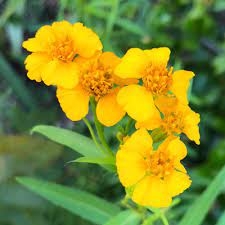
- September 21, 2023
- Life Style, Vastu Tips
Marigold Flower Types, Care, Vastu Benefits, & More
Introduction Marigold Flower Types, Care, Vastu Benefits, & More
Marigold flower types, care, vastu benefits, & more marigold flowers have long been admired in gardens and homes around the world for their vibrant colours and cheerful appearance.
Tagetes are marigold flowers. These orange blooms are simple to grow and care for. These flowers are significant to all festivals in India and are frequently use as sacrifices to God or for temple decoration. In this extensive guide, we delve into the fascinating world of marigold flowers, learning how to produce them, their significance in Vastu, and the numerous benefits they give. On this site, you may also learn about their various varieties, significance, and more. The marigold flower is called in Hindi as genda or chendumalli.
Are you looking for new projects in Thane ?
Marigold Flower Types Care Vastu Benefits & More : Types
Commonly found in the following varieties:
Marigolds From Africa:
African marigolds are distinguished by their large, pom-pom-like flowerheads of vibrant yellow and orange. They can grow to be three feet tall and are usually seen in beds.

Marigolds French:
French marigolds are usually less than a foot tall and more compact. They have delicately divided leaves and come in a variety of colours, including yellow, orange, red, and russet. Plant French marigolds around the edge of your yard to make the garden beds more appealing.

Marigold Signet:
Signet marigolds are smaller and more delicately shaped. They feature finely split leaves and petite, single flowers that are brilliant and cheerful. They are commonly use for edging, borders, and containers.

Marigold Mexican Mint:
This cultivar, sometimes known as Texas tarragon or Mexican mint marigold, is plant for its culinary and medicinal properties rather than for its decorative value. Their flowers are little and yellow, and their leaves are thin and scent.

Marigold Lemon Gem:
Lemon gem marigolds are a type of signet marigold notable for its lemony aroma. They have single, bright yellow flowers and are commonly use in herb gardens.
Tagetes Lemmonii:
This Mexican marigold species is appreciated for its fluffy, scent foliage and dazzling yellow, daisy-like flowers. It is a decorative shrub.

Marigold Planting From Seeds
- Begin by sowing marigold seeds indoors six to eight weeks before your region’s final projected frost date.
- Fill a small pot or tray with moderately wet commercial potting soil. Maintain drainage holes at the bottom.
- Arrange the marigold seeds evenly on the soil’s surface. Do not bury them; instead, lightly press them into the ground.
- For moisture retention, apply a thin layer of vermiculite to the seeds. Then, to simulate a little greenhouse, cover the entire tray or pot with plastic wrap or a lid.
- Marigold seeds do not require direct sunlight to germinate. Place the container in a warm location. The first sprouts will appear in about four to five days.
- Remove the plastic wrap once the seeds have begun to grow. They now require light exposure to continue developing.
- Place the tray or pot in a location that receives four to five hours of direct sunlight per day. Marigolds grow best in bright sunlight.
- While potting mix should be kept moist at all times, avoid overwatering. Damping-off fungus can thrive in overly damp soil.
- Once your marigold seedlings have grown several new leaves and are sturdy enough to endure the outdoors, transfer them into your garden.
Mature Marigold Planting
- If you buy mature marigold plants from a garden centre, prepare a sunny, well-draining spot at least two weeks ahead of time.
- Water the nursery-bought marigolds thoroughly in their containers the night before transplanting. This hydrates the plants and makes removal easier.
- Make holes in the garden bed that are at least 8 to 10 inches apart (modify according to marigold species).
- Remove the marigolds from their nursery containers gently, being careful not to injure the roots. Untangle any plants with tangled roots.
- Insert each marigold into a planting hole, making sure the soil level reaches the plant’s stem.
- Firmly press the dirt around each marigold to remove air pockets and establish a stable planting base.
- After planting, thoroughly water each marigold to allow moisture to reach the roots.
- Marigold Planting Season:
- Plant taller African marigold cultivars in early spring, when the danger of frost has gone. Planting these tall marigolds early allows them more time to grow and mature.
- Planting periods for French and Signet marigolds range from spring to mid-summer.
Flower Propagation Of Marigolds
Leave the flowerheads on the plant until they fade and dry to save marigold seeds for future planting. Remove the petals and shake off the seeds once they have completely dried. While not all flowerheads will produce seeds, the majority will. Keep in mind that hybrids from preserved seeds may not grow true.
Marigold Flower Planting Locations
Marigolds thrive in areas with plenty of sunlight. They prefer full light but may tolerate a little shade.
- If it’s hot outside, giving your marigolds some midday shade can be beneficial.
- If you are growing taller African marigolds, keep them away from strong winds and heavy rain. These taller types may require some light assistance or staking to stay erect.
How To Take Care Of Marigold Flower
Deadheading is the process of removing fading or spent flowers by pinching the flower head off.
Why Should You Deadhead Marigolds : Deadheading stimulates marigold plants to produce more blooms than seeds. This extends the blossoming season, making your marigolds look more colourful and beautiful.
Simple Deadheading Method: Follow these simple methods to deadhead marigolds:
- When you detect a marigold blossom starting to fade or wilt, look for its stem.
- Pinch or cut the stem back to the nearest pair of leaves with your fingers or scissors.
- The plant’s energy is redirected to the production of new flowers when the dead flower head is removed.
Fertilise:
Consider fertilising your marigolds after you’ve deadheaded them. Annual flowers, such as marigolds, are heavy feeders and will benefit from extra fertilisers. This improves their health and promotes continued blossoming.
How To Maintain Marigold Flowers
Marigold care is straightforward, and these cheery flowers can survive with little attention. Here’s how to care for your marigolds:
Pruning:
- Deadhead to encourage ongoing blooming throughout the season. This entails pinching or using scissors to remove wasted blossoms. Remove the faded flower heads as close to the next set of leaf nodes on the stalk as feasible.
- For younger marigold plants, pinching the tops will encourage bushier growth.
Soil:
Marigolds are not picky about their soil, but they do best in moderately fertile, well-drained soil. Plant them in clayey soil or in locations with poor drainage to avoid stunting their growth.
Fertiliser & Amendments: How To Fertilise These Plants
- You can optionally apply a 5-10-5 fertiliser to the planting hole when transplanting marigolds. However, when grown in the ground, marigolds normally do not require additional fertiliser.
- Excessive foliage growth at the expense of flowers might result from overfertilization during the growing phase.
- Use a diluted liquid fertiliser to offer critical nutrients when growing marigolds in containers.
Watering:
- Water your marigolds from the ground rather than from above. When exposed to excessive dampness, the dense, double flowerheads might decay.
- Allow the soil to dry partially between waterings while maintaining regular moisture, especially in hot and dry weather. Marigolds in pots may require daily watering because of the rapid drying of the soil.
Pests & Diseases:
- Grey mould, bacterial leaf spots, powdery mildew, and root rot can all affect marigolds. Keep a watch out for the symptoms of these disorders and take appropriate action.
- While marigolds are generally pest-resistant, they can attract pests such as leaf miners and spider mites on occasion. Inspect your plants on a regular basis and treat them as needed.
- Marigolds repel a wide range of insects, including mosquitoes, whiteflies, aphids, thrips, Mexican bean beetles, tomato hornworms, and nematodes.
The Meaning Of Marigold Flowers On Ganesh Chaturthi
Marigold flowers, also known as genda or chendumalli, are crucial during Ganesh Chaturthi, especially for Lord Ganesha. These brilliant orange blooms indicate enthusiasm and vitality, and they encapsulate the moment’s joyful spirit. Offering marigold flowers to Lord Ganesha is a beloved activity that people partake in to gain his blessings for good health and well-being.
Furthermore, marigolds are widely use to decorate temples during special events, adding to the solemn aura and joyful splendour of the event.
Marigold Flowers Have Numerous Vastu Benefits
Positive Power:
Marigold flowers are bright and vivid, and their presence in your home may improve your mood and produce a joyful environment.
Decoration:
Adding flowers to garlands or other ornamental arrangements will improve the aesthetic and attractiveness of your home while also encouraging a quiet environment.
Spiritual Importance:
Marigold flowers are frequently employ in religious and spiritual activities throughout many civilizations. Using them for prayer or meditation in your space may boost its sense of purity.
Festive Occasions:
Marigolds are commonly use as celebration decorations, and utilising them to decorate your home for festivals may make your family feel happy and pleased.
Aroma:
Marigolds have a distinct aroma that can make your house feel welcoming and revitalising.
Marigold Flower Types Care Vastu Benefits & More : Conclusion
Marigolds are brilliant, versatile flowers that add beauty and utility to gardens and homes alike. Because of their brilliant and long-lasting blossoms, they may be use to produce attractive flower arrangements and add a splash of colour to borders and beds.
Marigolds not only look lovely in gardens, but they also keep pesky bugs at bay, making outdoor settings more comfortable. They are an excellent choice for gardens, whether planted in pots or used for decorating with dried flowers. Marigolds are ideal for both expert and inexperienced gardeners since they are easy to care for and provide numerous benefits that make your garden look attractive and inviting.
Navi Mumbai Houses a Real Estate source is the most trust names in the market believes that master pieces can only be achieve by the client’s satisfaction. So that you can give your quality time with your loved ones is actually worth enough. Do you want Sale house, Flats in thane our portal is help you to find a buy flat to your price so please visit n find.
Premium Fully Furnished 2 BHK Flats For Rent In Kharghar Sector 35 & 36
You are looking for new projects in Thane we have new projects in Thane at affordable price
https://navimumbaihouses.com/properties/search/thane-all/
If you want daily property update details please follow us on Facebook Page / YouTube Channel / Twitter











